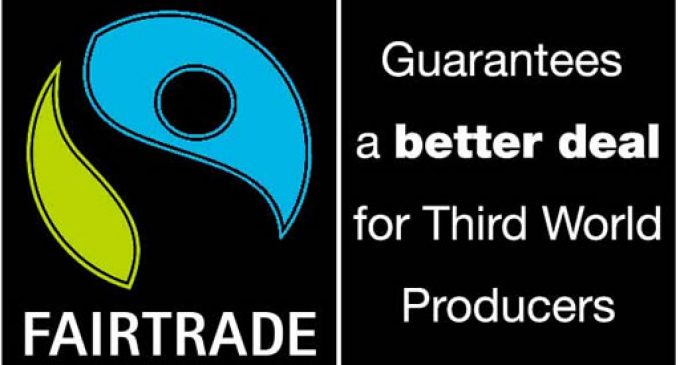Fair Trade USA labeling rules: Hoax or fair enough?

Fair Trade USA is considering much maligned changes to its labeling policy that would no longer require brands to source ingredients from a Fair Trade source even when one is available – is its draft policy fair or misleading?
The organization previously told this site that the proposed changes were fair for chocolate because 70-80% of one of its main ingredients, sugar, was sourced domestically in the US and cannot be Fair Trade.
Not-for-profit organization Fair World Project has labeled the changes a ‘hoax’ . Its campaign director Kerstin Lindgren said the rules gave no guarantee that a major ingredient, like sugar, was not purchased under exploitative conditions, either domestically or internationally.
‘Devaluing the Fairtrade mark,’ says Divine Chocolate
We spoke to Sophi Tranchell, managing director of premium player, Divine Chocolate, who argued that Fair Trade USA’s proposed policy, “would be surprising to consumers and damages the integrity of the Fairtrade system”.
She said that companies took great efforts to procure minor ingredients, such as inclusions like vanilla, from certified sources and worried that with such a rule, manufacturers would simply not bother. “It would devalue the Fairtrade mark,” she said.
Rodney North of Equal Exchange, an organization that has sourced 98% of its imported crops from certified sources said: “It is telling that under FTUSA’s new policies we would not have had to bother with creating these unconventional relationships and a lot of good work might never had happened.”
Defending her organization, Jenna Larson of Fair Trade USA said that Fair Trade was still a fraction of global trade and the changes would make it “a bigger piece of the pie”. She said that requiring all ingredients to be Fair Trade had deterred many companies, particularly small firms, from doing any Fair trade at all.
“Over the years, countless brands have chosen not to do certified cocoa, for example, because they are unable to immediately do the sugar and vanilla and all other ingredients as well. “
Equal Exchange ‘disenchanted’
For-profit cooperative Equal Exchange had assisted in the creation of Fair Trade USA in the mid-90’s, and was at one point its largest certification customer. But it says it has become ‘disenchanted’ with the direction and practices of Fair Trade USA.
Divine Chocolate expresses similar sentiments. In America, it had been using Fair Trade USA’s predecessor mark, TransFair USA, which was part of Fairtrade International. TransFair USA changed its name to Fair Trade USA in 2010 and split from Fairtrade International the following year.
Divine was left to choose which mark it would retain and chose Fairtrade International. Tranchell said the decision was mainly because Fair Trade USA was already allowing non-certified ingredients to be used even when it was possible to procure them from certified sources.
US sugar sourcing
Fair Trade USA says its draft rules reflect that the majority of sugar used in the US is procured domestically. Larson said that her organization would encourage Fair Trade sugar sourcing but could not in good faith ask brands to abandon the US sugar farmers from whom they already source.
Tranchell said: “The whole reason to do Fair Trade is to benefit small holder farmers in developing countries,” adding that procuring sugar under the US and EU regimes could undermine world prices at the expense of small scale farmers in developing nations.
Rodney North of Equal Exchange said that to imply that Fair Trade is not needed in the sugar market would be – for a certifier – a dereliction of duty.
“The Fair Trade USA position is akin to saying ‘Today the US government essentially blocks small sugar farmers in poor countries from the US market and we don’t think Fair Trade should be used to change that.’”
Separate logos
Fair Trade USA allows brands sourcing 100% certified ingredients to use a ‘FairTrade Cetified’ logo, but it also has a unique separate “Fair Trade Ingredients” label for brands sourcing below 100% but above 20%.
Fairtrade International also allows brands to carry its logo when 20% of ingredients come from certified sources, but if a fairtrade source is available – as is the case for sugar – it must be used.
Asked if Fair Trade USA’s separate label made any difference, Tranchell said: “You either need a Fair Trade mark or not or it is confusing for consumers. A Fair Trade certified mark means that it has Fairtrade ingredients.”
Implies full Fair Trade

Would a logo declaring the percentage of certified content or the specific certified ingredient be fairer?
Fair Trade labeling research by Lake Research Partners, which featured the views of 1,003 US adults, found that the majority of people think a ‘Fair Trade Ingredients’ label implies the product is entirely/majority Fairtrade.
85% were in favor of a percentage declaration on the ‘Fair Trade Ingredients’ label that would help them make better choices. The majority also felt it was fair to label the specific Fair Trade ingredient – e.g. “Fair Trade Certified Cocoa” without a seal.
Somewhat surprisingly, 48% were not familiar with the Fair Trade logo and the majority (46%) did not even know if they had purchased a Fair Trade chocolate or snack product. Those that did know know mainly because of the logo.
Fair Trade USA plans to finalize its policy in the next few months after it has analyzed incoming feedback.


































